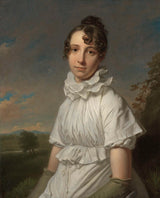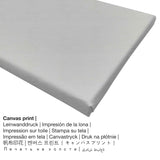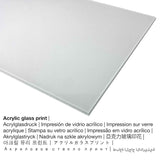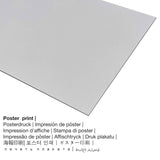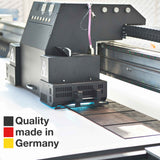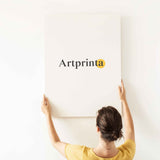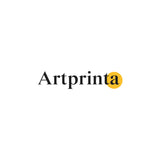Charles Howard Hodges, 1810 - Eserese Emma Jane Hodges - mbipụta nka mara mma
Ụtụ gụnyere. Mbupu gbakọrọ na ndenye ọpụpụ.
What you should know the artwork created by Charles Howard Hodges
Na 1810 na British painter Charles Howard Hodges created the 19th narị afọ masterpiece aha ya bụ Portrait of Emma Jane Hodges. Ugbu a, ihe osise dị n'ime Rijksmuseum's nchịkọta na Amsterdam, Netherlands. We are happy to mention that the public domain piece of art is provided with courtesy of Rijksmuseum.Creditline of the artwork: . Moreover, alignment of the digital reproduction is in portrait format and has a ratio of 1 : 1.2, meaning that ogologo bụ 20% mkpụmkpụ karịa obosara.
Description from the museum's website (© Copyright - by Rijksmuseum - Rijksmuseum)
Emma Jane Hodges was devoted to her father, the painter Charles Howard Hodges, who gave her drawing lessons and painted this dreamy portrait of her. She is about twenty years old and dressed in a gown of the latest fashion, with a ruffled double collar and elbow-length gloves of chamois leather. Emma Jane bequeathed this portrait to the Rijksmuseum in her will, together with her father’s self-portrait.
Ozi nka ahaziri
| Aha nke ihe nka: | "Portrait of Emma Jane Hodges" |
| nhazi ọkwa: | sere |
| Otu izugbe: | nkà nke oge a |
| oge: | 19th narị afọ |
| Afọ okike: | 1810 |
| Afọ nka: | gbara afọ 210 |
| Ụlọ ihe ngosi nka / mkpokọta: | Rijksmuseum |
| Ebe ngosi nka: | Amsterdam, Netherlands |
| Weebụsaịtị nke ihe ngosi nka: | Rijksmuseum |
| Ikikere nke ihe osise: | ngalaba ọha |
| Site n'aka: | Rijksmuseum |
Data omenka ahaziri ahazi
| aha: | Charles Howard Hodges |
| Aha ndị ọzọ: | Hodges Charles Howard, Hodges Charles H., Charles Howard Hodges, C.H. Hodges, Hodges |
| okike nke onye nka: | nwoke |
| Obodo onye nka: | British |
| Ọrụ nke onye na-ese ihe: | onye na-ese ihe, onye na-ese ihe |
| Mba onye si: | United Kingdom |
| Otu nka: | omenkà nke oge a |
| Oge ndu: | 73 afọ |
| Amụrụ n'afọ: | 1764 |
| Amụrụ na (ebe): | London, Greater London, England, United Kingdom |
| Afọ ọnwụ: | 1837 |
| Ebe ọnwụ: | Amsterdam, North Holland, Netherlands |
Nye iwu ihe ị ga-achọ idobe n'ụlọ gị
Na menu ndọpụta na-esote akụkọ ị nwere ike họrọ ihe na nha nke nhọrọ gị. Ị nwere ike ịhọrọ nha na ihe kachasị amasị gị n'ime nhọrọ ndị a:
- Ugogbe acrylic ebipụtara: An acrylic glass print, which is often named as a an art print on plexiglass, will turn your favorite original work of art into beautiful home decoration. The major benefit of an acrylic glass art print is that sharp contrasts and granular color details become more recognizeable thanks to the delicate gradation. The real glass coating protects your custom art replica against light and heat for several decades.
- Mbipụta nke aluminom: These are metal prints on aluminium dibond material with a true depth, which creates a modern look by having a surface structure, which is not reflective. The Aluminium Dibond Print is your perfect introduction to fine art reproductions produced with aluminum. The colors are bright and vivid, the details are clear and crisp, and there’s a matte appearance you can literally feel. This direct UV print on Aluminum Dibond is one of the most popular entry-level products and is an extremely sophisticated way to showcase art prints, since it puts 100% of the viewer’s focus on the image.
- Kwaaji: The canvas print, which shall not be mistaken with a canvas painting, is a digital image printed from an industrial printing machine. A printed canvas of this artpiece will let you turn your into a large collection piece like you know from art galleries. Canvas prints are relatively low in weight, which implies that it is easy and straightforward to hang your Canvas print without the help of any wall-mounts. Canvas prints are suited for all types of walls.
- Ebipụta akwụkwọ mmado na ihe akwa akwa: Our poster is a printed canvas paper with a granular structure on the surface. Please bear in mind, that depending on the size of the poster we add a white margin of around 2-6cm around the painting, which facilitates the framing.
Tebụl edemede
| Nkewa bipụta: | ọmarịcha nka |
| Usoro mmeghari: | mmeputakwa n'ụdị dijitalụ |
| Usoro mmepụta: | Mbipụta UV ozugbo (mbipụta dijitalụ) |
| Production: | emere na Germany |
| Ụdị ngwaahịa: | a na-achọ |
| Eji ngwaahịa emebere: | ịchọ mma mgbidi, ihe ndozi ụlọ |
| Nhazi onyonyo: | nhazi ihe osise |
| Njikwa oyiyi: | 1: 1.2 (ogologo: obosara) |
| Pụtara nha onyonyo a: | ogologo bụ 20% mkpụmkpụ karịa obosara |
| Materials: | mbipụta ọla (aluminium dibond), mbipụta akwụkwọ mmado (akwụkwọ kwaaji), mbipụta kanvas, mbipụta iko acrylic (nwere ezigbo mkpuchi iko) |
| Mbipụta kanvas (akwa akwa na etiti ihe ndọtị): | 50x60cm - 20x24", 100x120cm - 39x47" |
| Mpempe iko acrylic (nwere ezigbo mkpuchi iko) nha dị iche iche: | 50x60cm - 20x24", 100x120cm - 39x47" |
| Mpempe akwụkwọ mmado (akwụkwọ kwaaji) nha: | 50x60cm - 20x24", 100x120cm - 39x47" |
| Ụdị mbipụta aluminom dibond: | 50x60cm - 20x24", 100x120cm - 39x47" |
| Nhazi mmeputa nka nka: | oyiri nka na-enweghị isi |
Ozi dị mkpa: We try to depict the art products as exact as we can and to demonstrate them visually on the various product detail pages. However, the tone of the printing material and the printing may diverge marginally from the representation on the device's screen. Depending on your screen settings and the condition of the surface, color pigments might not be printed as exactly as the digital version depicted here. Since our art reproductions are printed and processed manually, there might also be minor discrepancies in the motif's exact position and the size.
© Nwebiisinka nke, Artprinta.com

